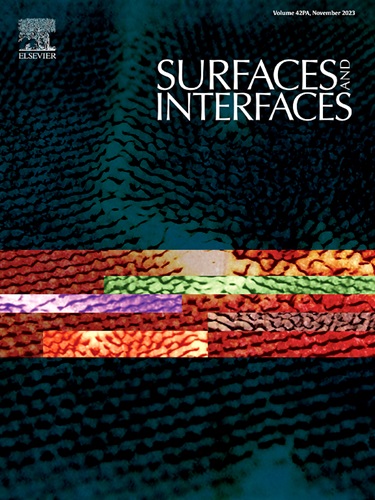Effect of the Spraying Process on Corrosion Resistance and Durability of Al-5Mg Coating on Carbon Steel: A Comparison of Transferred Arc Plasma Spraying and Flame Spraying Methods
IF 5.7
2区 材料科学
Q2 CHEMISTRY, PHYSICAL
引用次数: 0
Abstract
This study investigated the corrosion resistance and durability of Al-5Mg coatings deposited by transferred arc plasma spraying (TAPS) and flame spraying (FS) methods. The corrosion performance was evaluated through a 6000-hour accelerated corrosion test, complemented by electrochemical impedance spectroscopy and polarization measurements. The TAPS coating exhibited significantly lower initial porosity of 3.78%, reducing further to 1.09% after 1000 corrosion cycles, compared to the FS coating with an initial porosity of 9.93%, decreasing to 5.46%. Electrochemical tests revealed a lower corrosion current density in the TAPS coating (1.90 μA/cm²) than in the FS coating (2.54 μA/cm²) after 1000 cycles, indicating a superior corrosion resistance of the TAPS coating. Additionally, adhesion strength measurements indicated that the TAPS coating exhibited approximately 20% higher adhesion strength compared to the FS coating, further enhancing its durability and mechanical reliability. The enhanced performance of TAPS is attributed primarily to its dense and uniform pore structure and the resultant formation of a compact, protective oxide passive layer, effectively inhibiting electrolyte penetration. Overlay tests further confirmed that TAPS coatings exhibited significantly reduced blistering under linear defect conditions. These findings suggest that the TAPS process is a highly effective method for enhancing the corrosion protection of Al-5Mg coatings on complex steel structures.

求助全文
约1分钟内获得全文
求助全文
来源期刊

Surfaces and Interfaces
Chemistry-General Chemistry
CiteScore
8.50
自引率
6.50%
发文量
753
审稿时长
35 days
期刊介绍:
The aim of the journal is to provide a respectful outlet for ''sound science'' papers in all research areas on surfaces and interfaces. We define sound science papers as papers that describe new and well-executed research, but that do not necessarily provide brand new insights or are merely a description of research results.
Surfaces and Interfaces publishes research papers in all fields of surface science which may not always find the right home on first submission to our Elsevier sister journals (Applied Surface, Surface and Coatings Technology, Thin Solid Films)
 求助内容:
求助内容: 应助结果提醒方式:
应助结果提醒方式:


